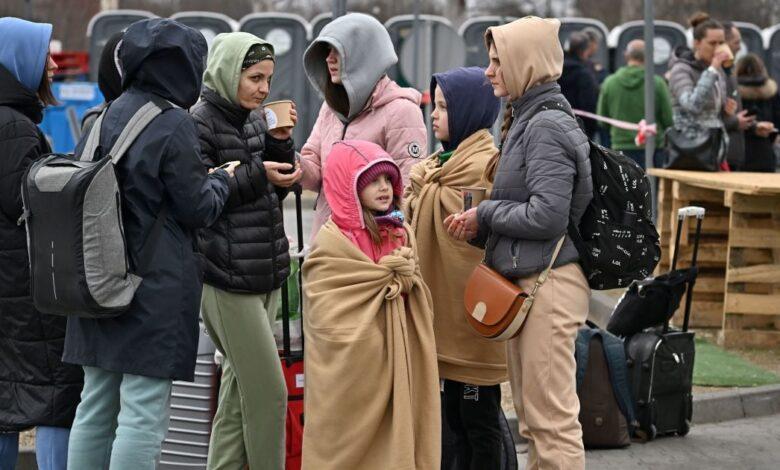Where did the refugees go: how the geography of asylum in Europe changed in 2025

The year 2025 was marked by changes in one of the most sensitive and permanent challenges for the European Union – migration policy. For a long time, Germany remained the main point of attraction for asylum seekers, but these positions are no longer undisputed. The European migration map is changing, and now Southern European countries are coming to the fore as new centers of attraction for migrants.
Germany is no longer at the top: reasons for the drop in migration pressure
According to new data from the European Commission published by the German newspaper Welt am Sonntag, 65,495 asylum applications were submitted to Germany in the first six months of 2025. This is almost half less than in the same period of the previous year – the drop by 43% became not just a statistical fact, but a political signal. Germany, which until recently received the most applicants for protection, has ceded the lead to other countries — Spain and France.
The reasons for this decrease are not accidental. As the member of the European Parliament and expert on migration policy Olena Dupont notes, this became possible thanks to the agreements concluded with the states of North Africa, which provide for limiting the flow of illegal migration even at the approaches to the European borders. In addition, the work of the Frontex agency, the structure responsible for the external security of the EU borders, has significantly intensified. This led to a change of routes and reorientation of migrants to other directions.
New favourites: who hosts the most migrants
In total, in the first half of 2025, 388,299 asylum applications were submitted in all EU countries, as well as in Norway and Switzerland. This is 23% less than in 2024. However, despite the overall decrease in volumes, the distribution between states has changed significantly.
Spain and France are the new leading countries on the list of preferred destinations for asylum seekers. Their popularity among migrants is due to several factors: geographical proximity to the Mediterranean routes, milder living conditions and a relatively higher level of tolerance at the household level. Spain, for example, actively cooperates with Morocco, while remaining a logistical gateway between Africa and Europe.
France has traditionally maintained ties with a number of African countries with a colonial past, including Mali, Senegal, and Algeria. Many migrants speak French, which facilitates the process of adaptation.
New pressure from the south: immigration through Libya
At the same time, the European Union faces another challenge: a significant increase in the flow of migrants through the territory of Libya. Of particular concern is the mass exodus of residents of Sudan and South Sudan, where the situation remains critical due to armed conflicts, hunger and lack of basic living conditions.
European Commissioner for Migration Magnus Brunner announced an urgent visit to Libya on July 8 in order to coordinate efforts with the governments of southern EU countries. It is obvious that the European Union is trying not only to contain the pressure on its borders, but also to reformat the entire migration policy architecture, giving priority to preventive influence even before the migrants arrive in Europe.
A policy of repulsion or a new strategy
The decrease in asylum applications in Germany should not be interpreted as an automatic improvement of the situation. Rather, it is about a new policy of distribution of responsibility. The EU is increasingly relying on external partners to curb migration, concluding agreements that include stopping flows even in African or Middle Eastern states.
Such a strategic transfer of the function of control to neighboring countries is the subject of criticism from human rights organizations. They highlight the risks to the rights and security of people who find themselves stranded in Libya, Tunisia or Algeria, countries where human rights protection systems often leave much to be desired.
Who was left out: challenges for Ukraine and Eastern Europe
Despite the fact that the main migration flows are formed in the southern direction, Ukraine and other states of Eastern Europe remain important regions where humanitarian challenges are no less acute. The war in Ukraine continues to force hundreds of thousands of people to seek safe haven within the EU. However, against the background of growing immigration from Africa, attention to this segment is gradually weakening, and bureaucratic procedures are lengthening.
This creates unevenness not only in access to asylum, but also in the focus of attention of European institutions. Such a situation raises new questions: does the system work fairly? Does the EU live up to its own declared principles of humanism and solidarity? European migration dynamics in 2025 indicate significant changes in the geography of asylum. Germany is no longer dominant, giving way to Spain and France. At the same time, migration routes are becoming more difficult, and EU policy is becoming tougher and more pragmatic. It gravitates more towards a model of preventive containment than towards the principles of openness and acceptance.
However, despite the change in the vector, the humanitarian content of the problem has not disappeared. And while shots are fired in Sudan and war continues in Ukraine, Europe will be forced to answer the same questions, only with new numbers, new routes, and perhaps new dilemmas.





